Burmese with Thanaka on Their Faces
Most Burmese men and women put this on their faces, using water to make a paste out of the material from the bark of the Thanaka tree. This tradition dates back 2000 years and is used both for protection from the burning Burmese sun and as makeup. Some apply Thanaka randomly, while others apply it with care, drawing patterns like leaves. The use of Thanaka as a makeup aptly demonstrates the relativity of the concept of beauty. Thanaka bears the pleasant smell of sandalwood and is known for its benefits to the skin. Maybe that's why the Burmese people never show their age, appearing to stay young.
As much as we consider this Thanaka tradition special, the Burmese also find beauty standards elsewhere in the world very special. During my trip, many women from Myanmar asked for my lipstick and nail polish. I gifted a woman my lipstick, so, in exchange, she applied Thanaka to my face. Another woman gave me a discount on the price of a handmade bag of dried watermelon seeds because I gave her my lipstick. It can be a nice gesture to bring along a few cosmetics on your trip to Myanmar.
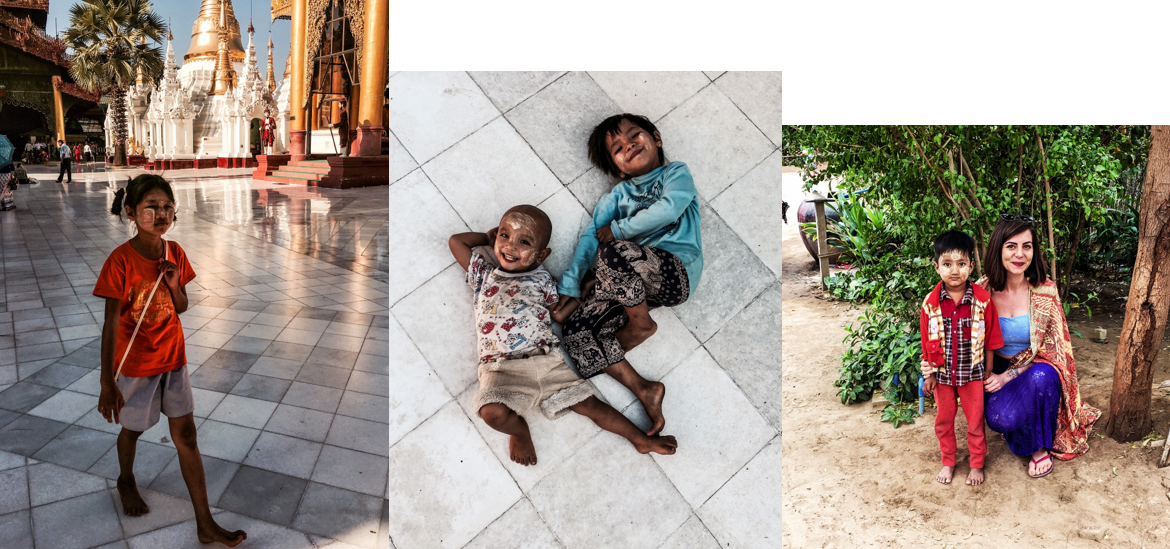
Burmese with Thanaka on their faces
A Legal Drug: Betel Nut
After learning Myanmar's geographic location, visa issues, and how to get there, I think the most important thing to know is what Betel Nut is and how to use it. The first encounter of many travelers to Myanmar with Betel Nut can be shocking and traumatic. Betel Nut, though not considered a drug, is an effective stimulant.
The leaf-like green material that vendors prepare on every street, at food markets, and in temple entrances may look like a food, but it has nothing to do with food.
Betel Nut, also known as “kun-ya” in Burmese, is a seed belonging to the fruit of the Areca palms. Calcium hydroxide is spread inside Betel leaves, Betel Nuts are placed on it, and, finally, acacia extract emerges. These materials are wrapped like a leaf wrap and become ready to use. Different sellers can diversify their products with flavors such as coconut or spicy pepper.
I described it as “shocking”, because the streets and sidewalks in Myanmar are filled with blood-like stains. Betel Nut users—including most of the local people—keep these wrapped leaves in their mouths for one to two hours. The effects of the Betel Nut appear in combination with the temperature of the mouth, and glands produce more and more saliva. After a while, users spit this red saliva cumulated in the mouth is spitted on the streets. These red stains are truly everywhere. The chance of getting hit by Betel Nut spit is greater than that of getting hit by cars or vehicles called tuktuks while walking along the street.
The negative health effects of the nuts have recently become a prominent issue in the country. For hygienic purposes, its use was prohibited in the Shwedagon Pagoda, the most sacred temple in the country, in 2010. Following this decision was the restriction of the sale of Betel Nut within 50 meters of schools. This restriction, however, doesn't appear to have been very effective. The persistent consumption of Betel Nut by women, men, and even Buddhist monks is apparent from just a glimpse of locals’ teeth, permanently turned crimson.
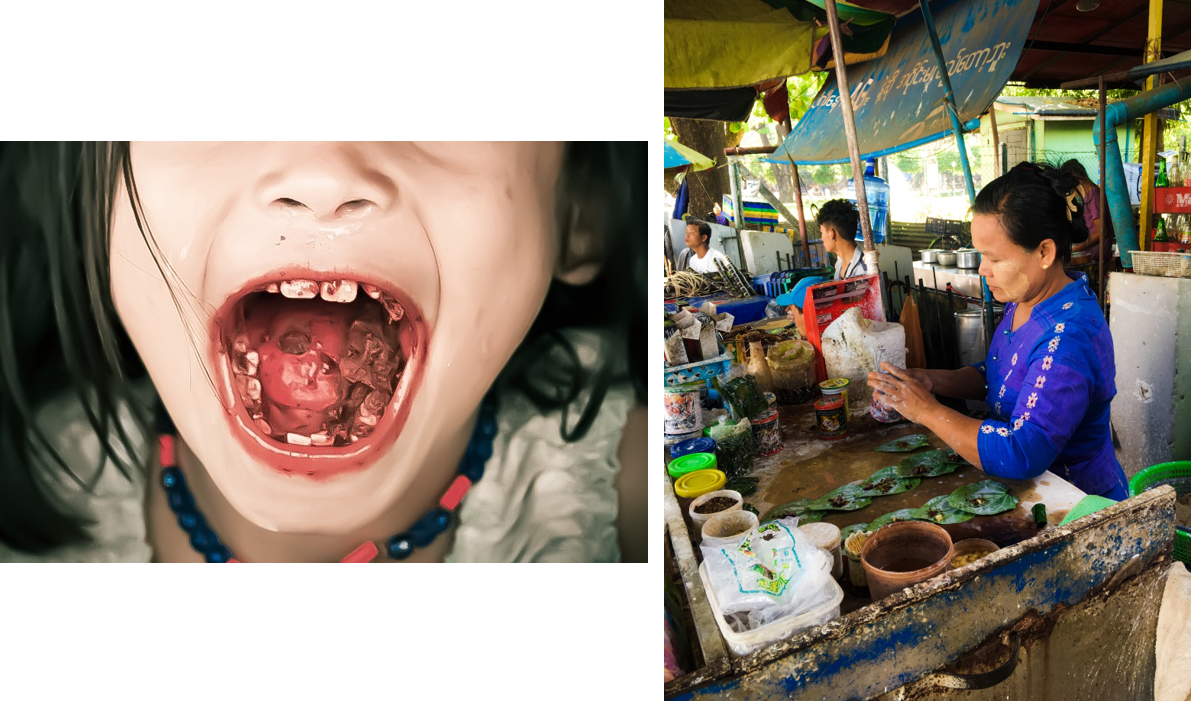
Betel Nut teeth and a Betel Nut dealer in Yangon
The interesting naming system in Myanmar
Burmese don't have a naming system in the sense that we're accustomed to. For Burmese who care about astrology, their date of birth has a significant astrological meaning. When choosing names, instead of their parents’ last name, the day on which they born and the astrological meaning attribute to that day are important. Children’s names are given certain syllables based on these elements. People in the same family do not have a common, distinguishable name. Women do not take their husbands’ names with marriage. Burmese do not know which part of their names will be used as a last name when they submit formal applications outside of the country. As a result, they must use the final syllable in their name as their last name.
Monks, nuns, novices, and the rest of the population, called “lay people”
There are more than 500,000 monks in Myanmar, the most radical Buddhist country in the world with a population of 50 million. There are so many monks and nuns that you come across them wearing saffron and red clothes just as often as normally dressed people.
Buddhists in Myanmar are split in two segments. The first group are called “lay people” and are Buddhist but chose the “secular life” instead of living in monasteries. Their national duty is to provide money and food aid to monks living in monasteries every day, and, in return, to use their teachings and prayers. The second group is monks, nuns and "novices"—child monks under the age of 20. They have devoted their lives entirely to religion. The religious duties of Burmese can be considered military service. Everyone briefly stays in monasteries on two occasions between the ages of 10 and 20 and when they become adults. At the end of these processes, people decide how they wish to continue their lives and which group they would like to join.
Monks who choose the monastery life can own few clothes, razors to shave their hair, needles and threads to sew their clothes, and containers to collect donations; they are allowed to own no more than eight items. Monks do not eat anything except breakfast at 5:30 and lunch at 10:30, and they spend their time in the monastery studying Buddhist teachings, meditating, learning Pali, and devoting themselves to general affairs in the monastery. In the morning, they go out to the streets to collect donations. Unlike monks, nuns wear pink. Women can't become “Buddha”—the enlightened one. They only chose monastery life so that they may come back in their next life as a man who could then become a Buddha. They can invest in this life, in this body, just for a possibility. Conditions are not excessively strict for those who pursue the monastery life from an early age; they can play games, play football, and have fun. They start to live with more discipline when they turn 20.
In large cities such as Yangon, you can see monks using smartphones. Although this is not common, some monasteries have more flexibility than others in the lives of monks.

Monks, nuns, and novices in Myanmar
Temples (Pagodas) and the Time Spent in Temples
There are so many temples in Myanmar, called the Land of Pagodas, that the exact number is unknown. There are 2,300 temples in Bagan alone. This figure only counts the remaining temples from the 10,000 that have been constructed over time. Golden, tile, and white temples are visible from the sky as planes land in Myanmar. Temple architecture in Myanmar is quite different from that of these structures in other Buddhist countries. Some pagodas have entrances on all four sides, with huge Buddha statues placed inside, facing four directions. Others have no such entrances. The holiest temples are covered in gold, and the people give the most precious gift they can give to Buddha to make these gold temples even bigger and glorious. They buy golden leaves, which take hours to craft and are made into thin golden plates. They attach these leaves to golden temples or golden Buddha statues at the temples they visit. They spend an unusual amount of time in temples. Unlike Christians and Muslims, who go to holy places at certain times for blessings, prayers, or sermons, Burmese Buddhists spend hours in temples. For them, pagodas can be used to pray or to spend time with friends and families. They take food with them and lay a blanket on which to eat, even sleeping as having a picnic.
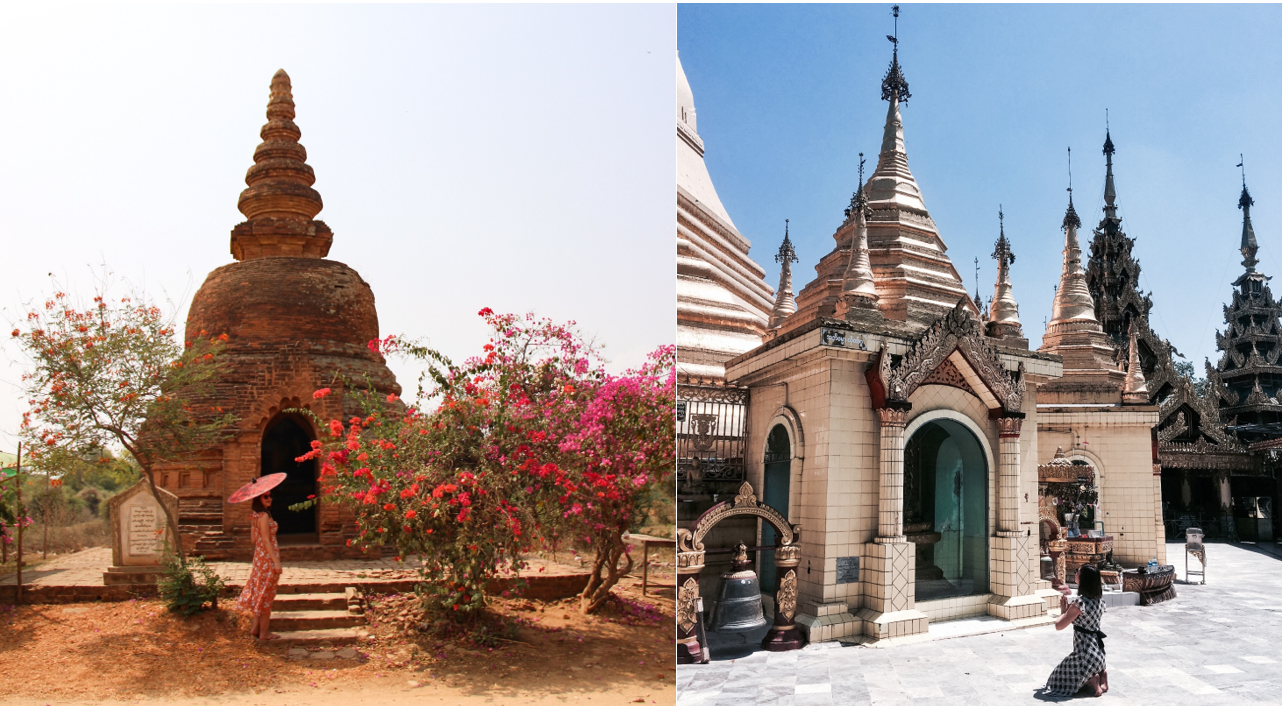
Mystical temples of Myanmar
The Importance of astrology and the days of the week
Buddhism and astrology are interwoven in Myanmar's belief system. It strongly influences culture, people, and worship.
Based on astrology and the planets, a week is eight days, not seven, in Myanmar. Wednesday is split into two separate days—before noon and afternoon. The other days remain the same. The day of birth has a huge impact on personality. A syllable in people's names is given according to the day they are born. It is also believed that people's personalities are shaped based on this special day. For example, people born on Monday are jealous, those born on Tuesday are honest, or people born on Wednesday are quick-tempered—this characteristic is more dominant on those born on a Wednesday afternoon. People born on Thursday are easygoing, and those born on Friday are talkative. People born on Saturday are quarrelsome, and the same applies for those born on Sunday. People even choose spouses based on the compatibility of the days they were born.
It would most surprise people in Myanmar if you didn’t know which day of the week you were born on. This day is that critical.
Even in Burmese prayers is the day of birth significant. In large temples, there are separate Buddha statues, called “birthday corners”, that symbolize the eight days of the week. People go each week to the statue representing the day they were born and leave flowers. They pour water down the head of as the number of Buddha statues corresponding to their age. It is believed that this gives luck and good karma.
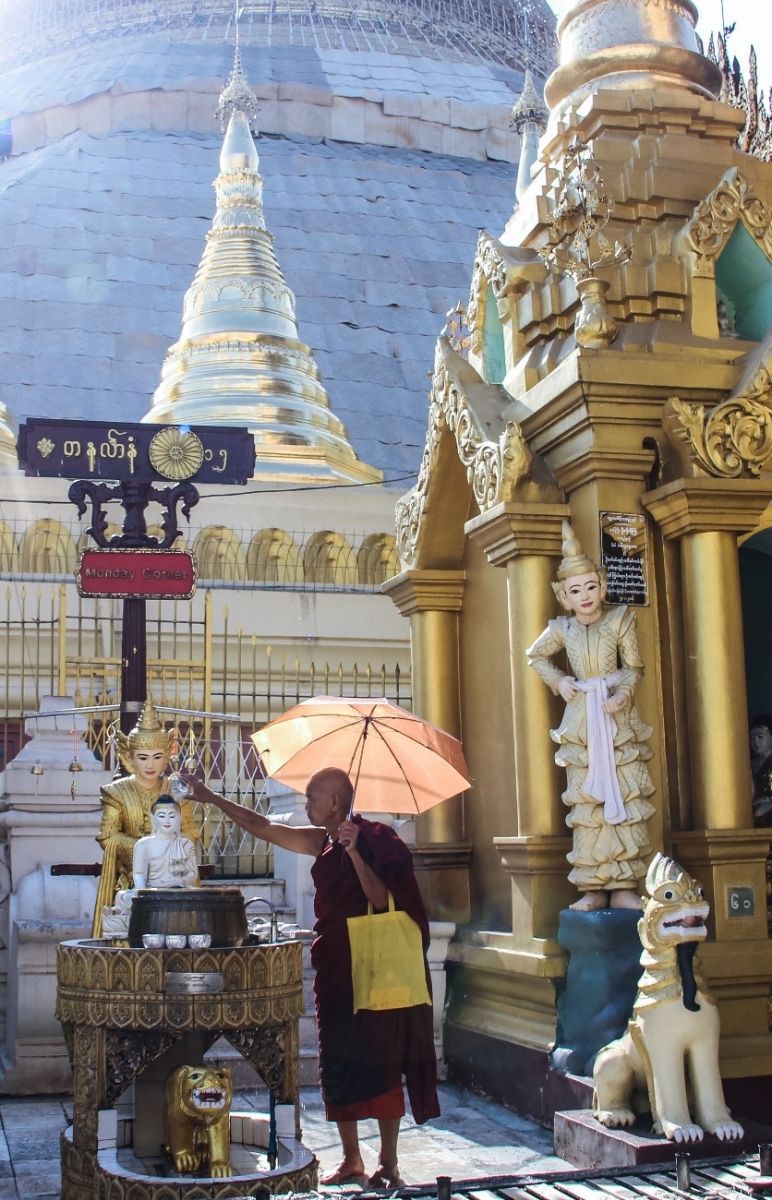
A monk pouring water on the head of the Buddha statue in the "Monday Corner", since he was born on Monday, at the Shwedagon Pagoda
Burmese Clothing Styles
No shoes or slippers are allowed in temples in Myanmar. This is a sign of respect for Buddha. Using the image of the Buddha in any way, as with tattoos on the body, is also prohibited. The imprisonment of a bar owner in Yangon for using a Buddha wearing headphones in an advertisement demonstrates the seriousness of the situation.
Women and men of Myanmar could be said to dress quite conservatively. Clothing rules are usually implemented both in temples and on the streets. Clothes covering knees and shoulders are preferred, and garments, called as "longyi", are worn around the waist.
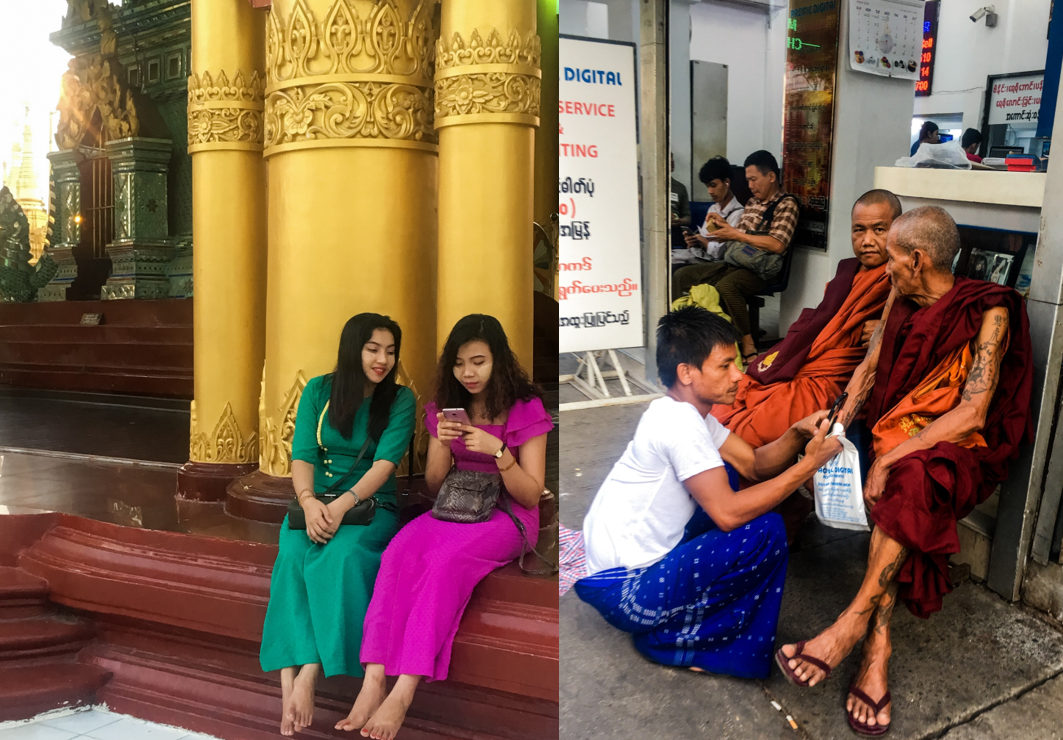
Clothing styles of women and men
The foods of Myanmar
The subject of food in Myanmar is very compelling. Although they say the street food in Myanmar is diverse and widespread, we couldn’t say that the fried grasshoppers and paunches sold by street vendors are appetizing. But this absolutely doesn’t mean that there is no food to try. Salad made from green tea leaves is a nice alternative on this list, and it’s a flavor not found in other countries.
Another specialty is rice, which is used on altars to Buddha and is served with finely crafted golden leaves covering golden Buddha statues in temples. Rice with real gold is only sold in Mandalay.
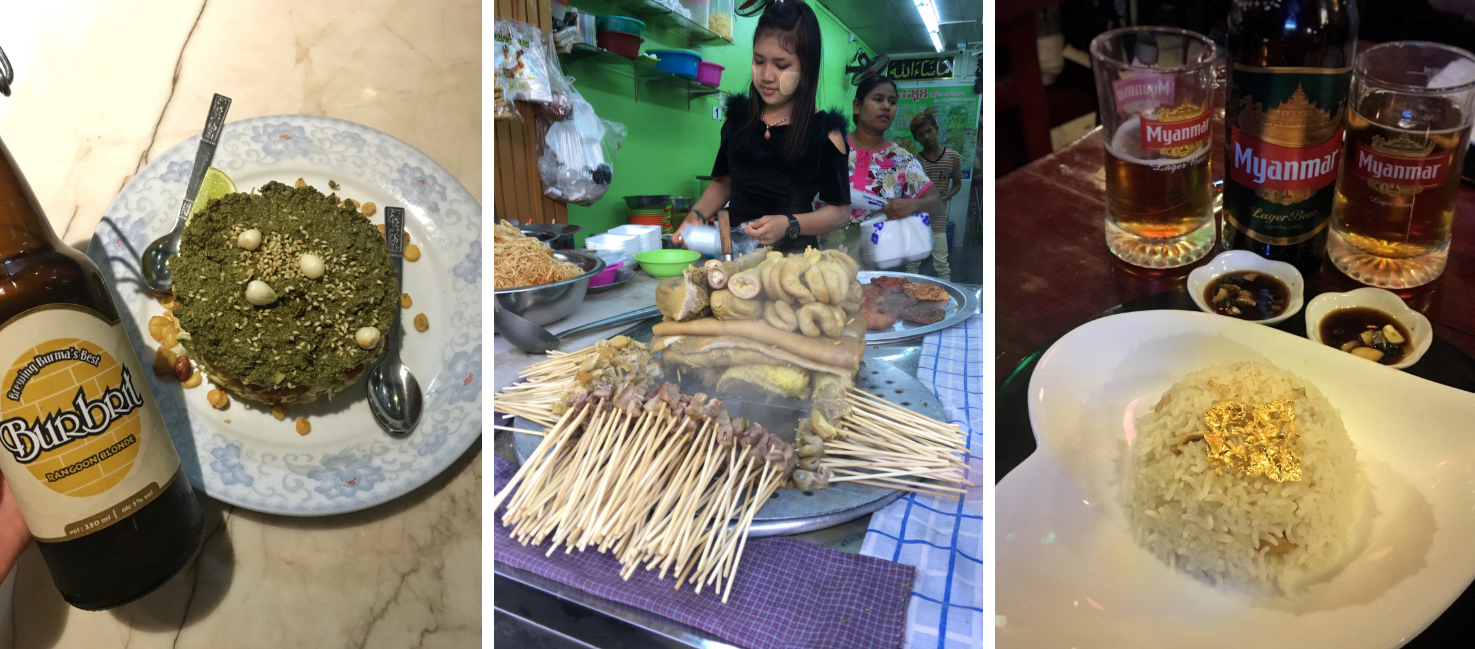
Green tea salad, pork rumen, and real golden rice
Currency
Tourists in Myanmar can exchange US dollars for Myanmar Kyat, but the rules are very strict. Dollars to be exchanged cannot be from the CB series. The series has been completely invalidated in the country due to counterfeit bills previously printed in this series. Also any seal found on dollars or a banknotes printed before 2013 or a millimetric wrinkle on the banknote are sufficient cause for rejection at exchange offices.
Written By: Çiğdem Tura
Date of Publication: 01/14/2020
Target Audience: People Who Like To Travel, Travel Lovers, Interesting Content Audiences
Things to Know About Singapore
Singapore is the most cosmopolitan city country in the world, visibly combining many cultures yet ...